Krishansar Lake : A shimmering gem in Kashmir’s high-altitude crown
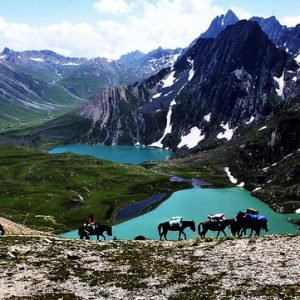
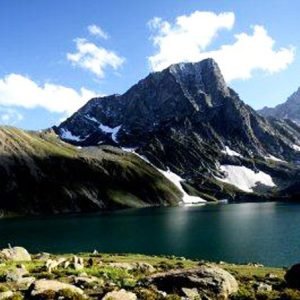
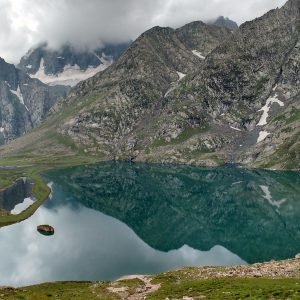
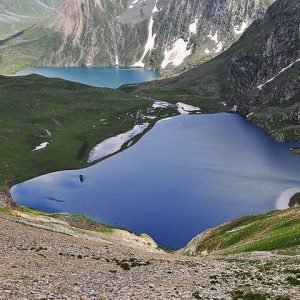
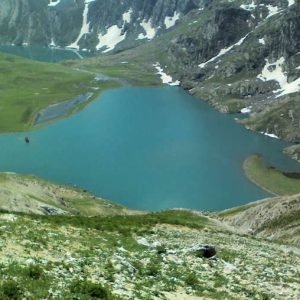
Table of Contents
Toggle1. Krishansar Lake Overview
i. Location: Krishansar Lake lies at a height of around 3,710 meters above sea level and falls within the popular trek route under the itinerary of the Kashmir Great Lakes trek. It is situated near twin lake Vishansar Lake and is surrounded by snow-capped peaks and alpine meadows.
ii. Geographical Coordinates
Latitude: 34.5205° N
Longitude: 75.4102° E
iii. Type of Lake: Alpine/Glacial Lake
iv. Catchment Area: Krishansar Lake is mainly fed by the melting glaciers that provide crystal clear water, reflecting the peaks surrounding it on the surface of the lake. The lake freezes during winter and is inaccessible for the larger part of the year. Flora and fauna abound in the area, considering its ecological importance.
2. How to Reach Krishansar Lake
Journey to Krishansar Lake is actually a part of the Kashmir Great Lakes trek, which starts from the town of Sonamarg.
2.a. By Air
The nearest airport to Lake Krishansar is Srinagar International Airport at a distance of 100 km from Sonamarg. Moreover, flights to Srinagar are also available from main cities in India such as Delhi, Mumbai, and Bangalore. From Srinagar, one can hire a taxi or take a local bus to Sonamarg, the base camp of the trek.
2.b. By Train
The nearest railway station is the Jammu Tawi, which is 350 km from Sonamarg. From here, the visitor can take a bus or a taxi to Srinagar to reach Sonamarg. The distance between Jammu and Sonamarg would take almost 8-10 hours.
2.c. By Road
Sonamarg is well connected by road to Srinagar, which is about 80 km away. Buses and taxis are regularly available from Srinagar to Sonamarg. The journey itself is very picturesque traveling through the valley and alongside rivers.
3. Trekking Route
Krishansar Lake is on an extended multi-day trek route. Generally, the itinerary goes as follows:
Day 1: From Sonamarg to Nichnai via Nichnai Pass
Day 2: Nichnai to Vishansar Lake
Day 3: Vishansar Lake to Krishansar Lake
The walk to Krishansar Lake is a moderate walk that carries either the river crossing or passes crossing through alpine meadows.
4. Trek to Krishansar Lake
4.a. Kashmir Great Lakes Trek
The trek of Kashmir Great Lakes offers some of the most scenic walks across India. The total route of the trek is about 72 km in six to eight days, subject to the itinerary.
4.b. Difficulty Level
The trek is graded as moderate to difficult, based on the weather conditions and the physical fitness of the trekker. Steep ascents, tricky descents, and crossing high-altitude passes like the Nichnai Pass at an altitude of 4,100 meters are all included in the route. However, it is all worth the effort as trekkers are gifted with views of the most beautiful lakes and valleys of the region.
4.c. Trekking Distance and Time
Sonamarg to Nichnai: 11 km takes 6-7 hours
Nichnai to Vishansar Lake: 12 km takes 6-7 hours
Vishansar to Krishansar Lake: 5 km takes 2-3 hours
4.d. Accommodations and Facilities
Accommodation is in tents during the trek as there are no guesthouses or lodges on this trek route. Most trekking groups provide accommodation in tents, sleeping bags, food etc. Trekkers carry all essentials including warm clothing, waterproof accessories, a first aid kit and adequate water supply.
5. Best Time to Visit Krishansar Lake
The best time to visit Krishansar Lake is between June to September, as it has all the snow melted and all the trekking routes are accessible. The weather conditions during the daytime are not hot and very pleasant. In nights, temperature falls between 15 to 20°C near freezing.
5.a. Monsoon (July-August): During the monsoon season, although it’s not that rainy, the meadows do look very lush green. On these trails, however, the slippery roads and occasional landslide prove a hurdle to the trekkers.
5.b. Autumn (September): With the setting of autumn, the landscape changes, the trees and meadows turn into hues of gold and brown, attracting photographers and for solitude seekers.
5.c. Winter (October to May): Snow covers Krishansar Lake and its surrounding during winter season, inaccessible to trekkers. It freezes over and becomes a surreal landscape but harsh at the same time.
6. Flora and Fauna Around Krishansar Lake
The region around Krishansar Lake is rich in biodiversity, making it a paradise for nature lovers and photographers as well.
6.a. Flora
During summer, daisies, buttercups and other wildflowers occupy the alpine meadows. Pine and deodar trees abound at the low altitudes. Mosses and lichens are lush around the lake.
6.b. Fauna
Several species of wildlife inhabit the lake and its surroundings. One can expect to see Himalayan marmots, ibex, snow leopards, although these rarely occur, and several species of migratory birds. There is also a huge population of brown bears in this region, so trekkers should be extremely careful at least at night.
It is a haven for all the migratory birds like Brahminy ducks, bar-headed geese and the Himalayan monal. It would be a great time for the birdwatcher here as Krishansar Lake is still an unexplored treasure.
7. Photography and Scenic Views
Photographer’s paradise with deep blue water of the lake contrasting well in green meadows surrounding and white snow-clad peaks in the background. The most exciting photographic spots are:
7.a. Reflection of Peaks in the Lake: The perfect calm lake with its tranquil surface gives a perfect reflection of the surrounding peaks thereby providing an effect of a mirror so beautiful and surreal.
7.b. Sunrise and Sunset: Totally magical views of the landscape around the lake are seen when the changing of time, sun rising and sun setting, makes it prime time especially for photographers.
7.c. Starry Nights: Being an extremely isolated location, pollution in Krishansar Lake is minimal, therefore, the night sky is very vivid for astronomical views. Astrophotographers would love to capture the Milky Way and shining of stars in the sky above the lake.
8. Cultural and Religious Significance
Krishansar Lake, along with Vishansar Lake, holds religious significance for Hindus. Both lakes are considered sacred and are believed to be associated with Lord Vishnu (Krishna and Vishnu, respectively, hence their names). Pilgrims often visit these lakes as part of a spiritual journey and some perform rituals on the lake’s banks.
Apart from its religious importance, it constitutes an essential part of the local folklore and oral traditions. Gujjars, Bakarwals as well as numerous tribes of shepherds have been staying in this region for hundreds of years. Their stories and tales represent a yet another thick layer of cultural thickness.
9. Attractions around
9.a. Vishansar Lake
Vishansar Lake is 1 km from Krishansar Lake. The other alpine lake that should not be forgotten, the two beautiful lakes are often described together as the “twin lakes” because of their closeness to each other, a short trek from Krishansar to Vishansar is best for those who want to visit both.
9.b. Gadsar Lake
Further up lies Gadsar Lake, which some would call the “Flower Lake”. The lake is surrounded by beautifully sown alpine meadows, yet another short highlight of the trek.
9.c. Nichnai Pass
Nichnai Pass is considered one of the high points of the Kashmir Great Lakes trek at 4100 meters. The pass is said to offer unbelievable vistas of many surrounding valleys as well as peaks. So it is one of those locations any trekker going up there is sure to stop by.
9.d. Sonamarg
A day in Sonamarg is highly recommended before embarking on a trek to Krishansar Lake. Sonamarg, which is called the ‘Meadow of Gold,’ is surrounded by snow-capped peaks and is known for horse-riding, river rafting and camping activities.
10. Tips for Trekkers
10.a. Fitness Level: The climb is strenuous due to steep climbs and attaining high altitudes. Participants are, therefore, recommended to participate in some cardio training and strength exercises before the trek.
10.b. Altitude sickness: All participants are advised on the risks involved with altitude sickness symptoms such as headaches, dizziness and nausea. Proper acclimatization and hydration should, therefore, be adopted during the trek.
10.c. Weather Readiness: Weather, in mountains, could be a whim and be unpredictable at times. We have to prepare for rain, snow and extreme cold. Waterproof gear and thermal clothing must be carried.
10.d. Travel Permits: Travel permits may be required in some areas if not all to the Krishansar Lake. This is especially needed for foreign travelers. It is better to inquire through local authorities or the trek organization to confirm their current updates for travel permits.
11. Conclusion
Hugged by the Himalayas, Krishansar Lake is a treasure yet hidden away. Its hints of adventure are combined with a rich cultural heritage. Krishansar Lake is sure to have something in store for you, whether you are an avid trekker, a nature lover or a soul seeking spiritual salvation. The amazing majesty of Kashmir’s alpine lakes surrounds Krishansar Lake while challenges aptly make the Kashmir Great Lakes trek more attractive.
How to book a trip to Krishansar Lake, India with Charzan Holidays?
For a seamless and exceptional booking experience, contact Charzan Holidays at reservations@charzan.in or call us at +919622224473
People ask FAQ's
1. Where is Krishnasar Lake located?
Krishansar Lake is one of the most beautiful alpine lakes, located in the Ganderbal district of Jammu and Kashmir, India. Krishansar Lake, which is at about 3,710 meters high, is a part of the Great Lakes Trek. Fancies little meadows and snow-covered mountains, it has attracted trekkers and nature lovers alike.
2. How to reach Krishnasar Lake?
To reach Krishnasar Lake, head for Sonamarg in the state of Jammu and Kashmir. Start your trek towards Nichnai Pass and then proceed 15 kilometers on a moderate to difficult trek. The trail takes you over Vishansar Lake before reaching Krishnasar, which is at a height of 3,710 meters, offering breathtaking alpine scenery.
3. How to reach Krishansar Lake from Sonmarg?
In order to reach Krishansar Lake, one has to begin the trek from Sonmarg, following the Nichnai Pass, which is a part of the famous trek, the Kashmir Great Lakes trek. The trek takes nearly 2-3 days to cover, crossing through alpine meadows and rugged terrain. Alternatively, hire a local guide or join an adventure trekking group to go on an adventure trek to this serene lake.
4. What is Krishansar lake famous for?
Fabulous for their picturesque beauty and crystal waters, alpine environment, Krishansar Lake is not really distant from Sonamarg in the Kashmir Valley. It is also an upgraded destination on the itinerary for trekkers of the Great Lakes trek in Kashmir. The reflection of snow-capped peaks within its crystal clear waters makes it look absolutely stunning, particularly during the tail-end of summer.
Frequently Asked Questions
1. What is Krishansar Lake? | |
| Krishansar Lake is a stunning alpine lake located in the Kashmir Valley, near the famous Vishansar Lake. It is known for its crystal-clear waters and beautiful mountainous surroundings. | |
2. How do I reach Krishansar Lake? | |
| Krishansar Lake can be accessed via a trek from Sonamarg or Vishansar Lake. The trek typically takes about 4 to 6 hours, depending on the starting point and individual pace. | |
3. What are the main attractions near Krishansar Lake? | |
| Attractions include the serene waters of the lake, lush meadows, breathtaking views of the surrounding mountains, and nearby trekking routes that connect to other scenic spots. | |
4. When is the best time to visit Krishansar Lake? | |
| The best time to visit is from late June to early September when the weather is pleasant, and the trekking paths are fully accessible. | |
5. Is Krishansar Lake safe for tourists? | |
| Yes, Krishansar Lake is generally safe for tourists. However, it’s advisable to check local conditions and follow any travel advisories, particularly when trekking. | |
6. Are there accommodations near Krishansar Lake? | |
| There are no accommodations directly at the lake. However, trekkers can camp near the lake or find options in Sonamarg, which is the nearest town. | |
7. What activities can I do at Krishansar Lake? | |
| Visitors can enjoy trekking, camping, fishing, photography, and exploring the beautiful landscapes and meadows surrounding the lake. | |
8. Is public transportation available to Krishansar Lake? | |
| Public transportation options to reach Sonamarg are available, including buses and shared taxis. From there, you’ll need to trek to Krishansar Lake. | |
9. What should I pack for a trip to Krishansar Lake? | |
| Pack trekking gear, warm clothing, sturdy hiking shoes, a first aid kit, food and water supplies, and a camera to capture the stunning scenery. | |
10. Are there local customs to be aware of? | |
| Yes, it’s important to respect local customs and traditions, particularly regarding dress and behavior, especially in rural areas. | |
11. Is Krishansar Lake suitable for families? | |
| Krishansar Lake can be family-friendly, but the trek may not be suitable for very young children or those with mobility issues. It’s advisable to assess fitness levels before the trek. | |
12. Can I find food options near Krishansar Lake? | |
| There are no food options at the lake itself, so it’s best to carry packed meals or snacks from Sonamarg. | |
13. Are there guided tours available for Krishansar Lake? | |
| Yes, local guides can be hired for treks to Krishansar Lake, offering insights into the region’s ecology and culture. | |
14. What is the nearest city to Krishansar Lake? | |
| The nearest major city is Anantnag, while Sonamarg serves as the main base for travelers heading to Krishansar Lake. | |
15. Can I visit Krishansar Lake in winter? | |
| Visiting Krishansar Lake in winter can be challenging due to heavy snowfall and cold temperatures, making trekking routes inaccessible. The best time to visit is during the warmer months. |


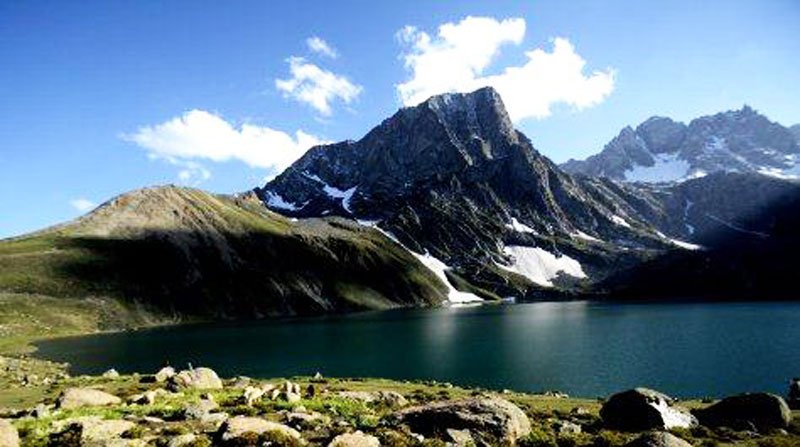
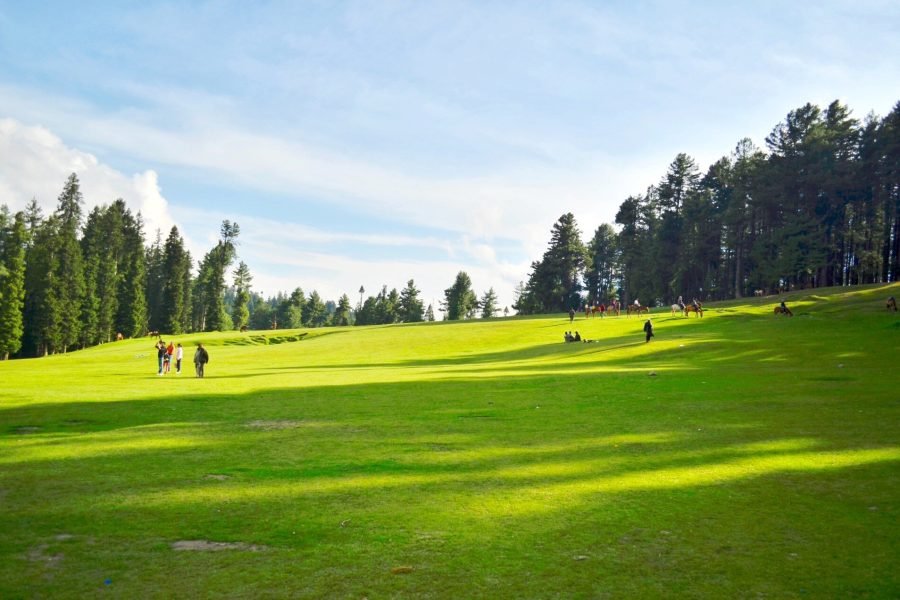
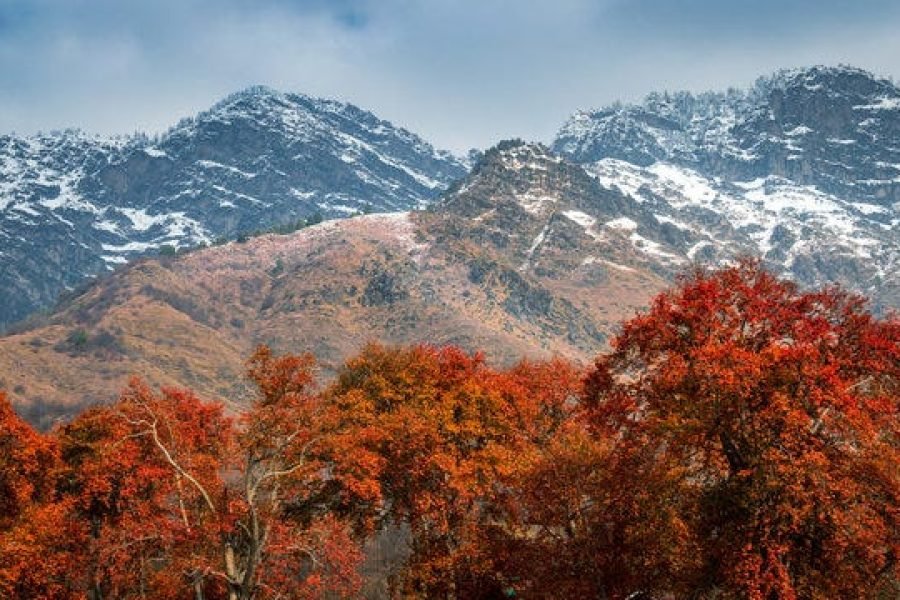
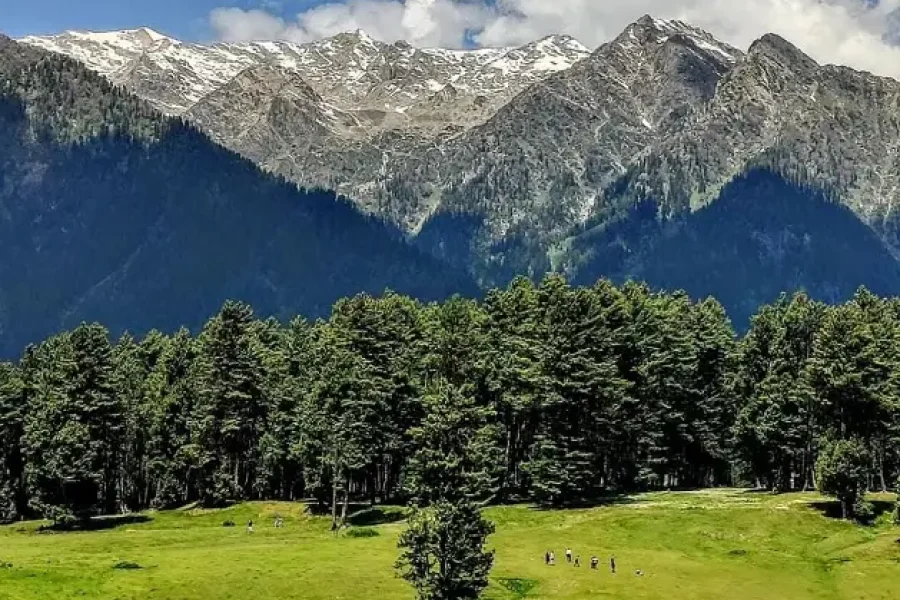
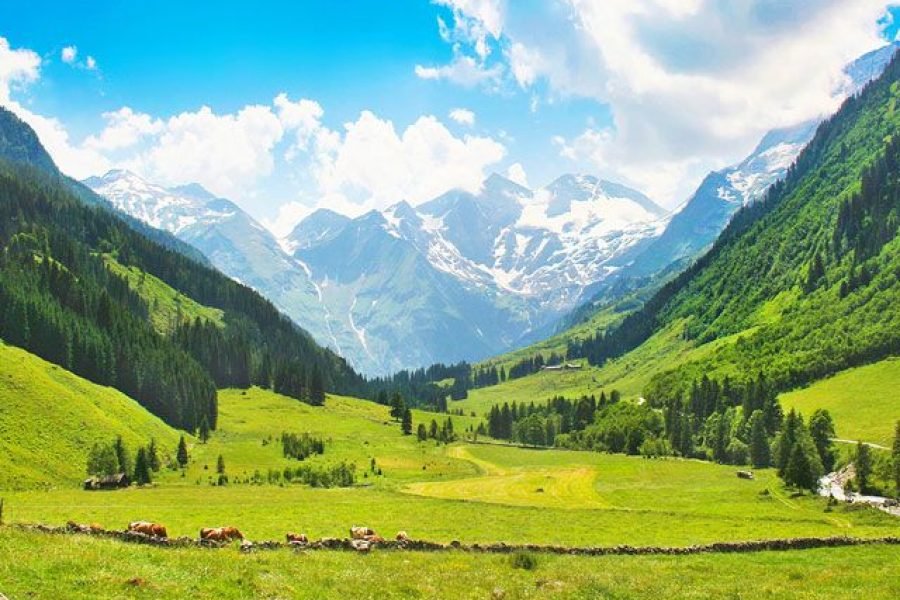
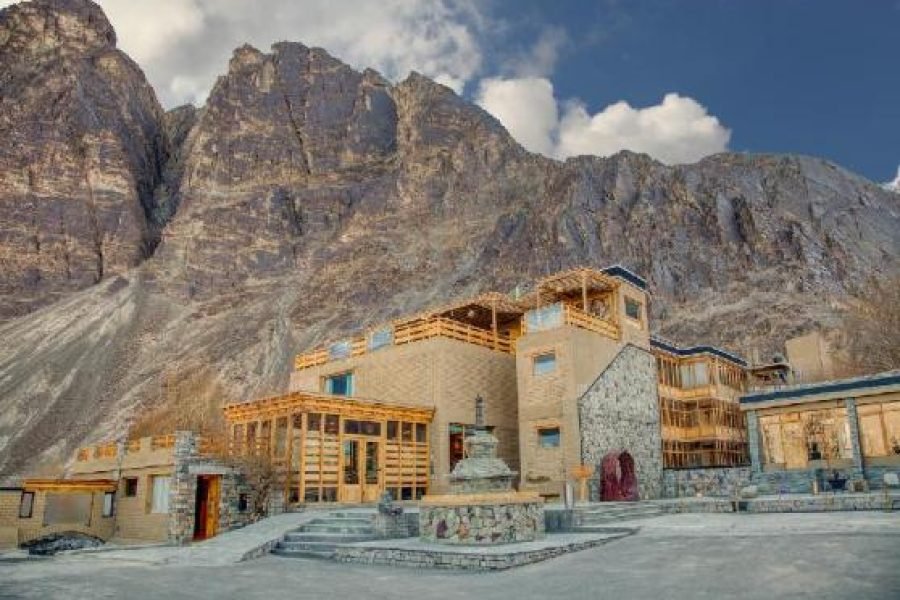

0 Comment